Photos with this report (click to enlarge) | |||
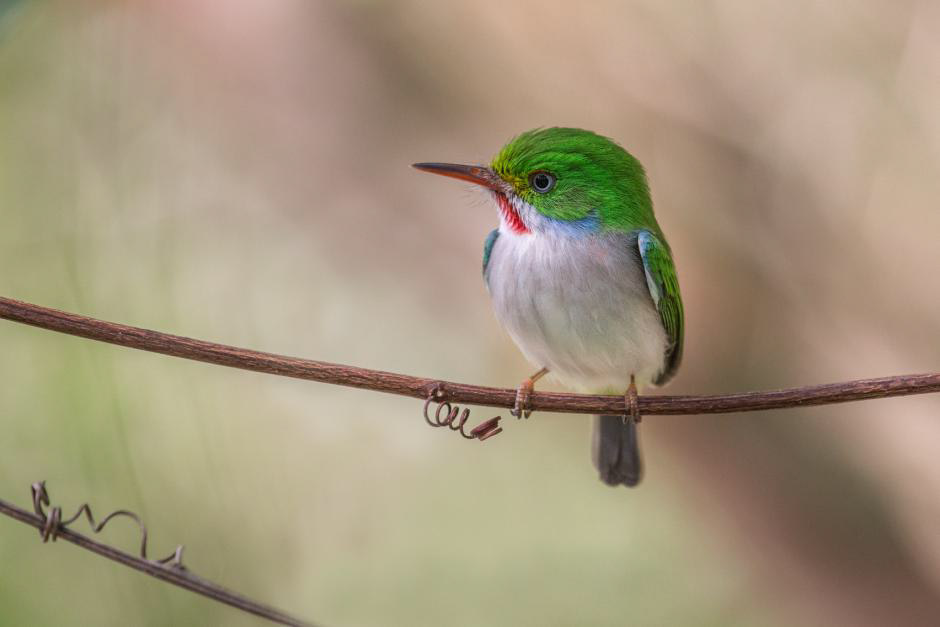 Cuban Tody |
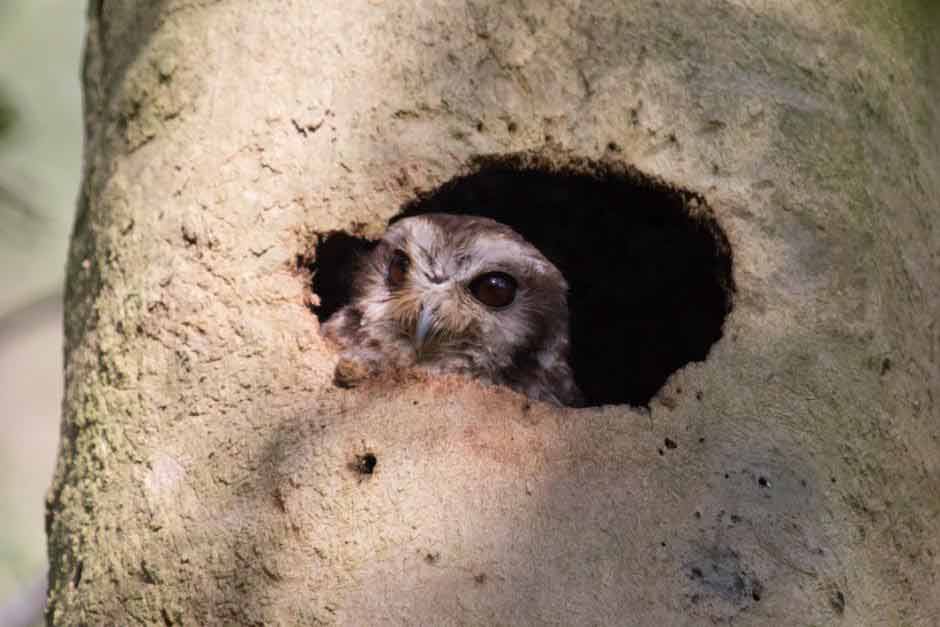 Bare-legged Owl |
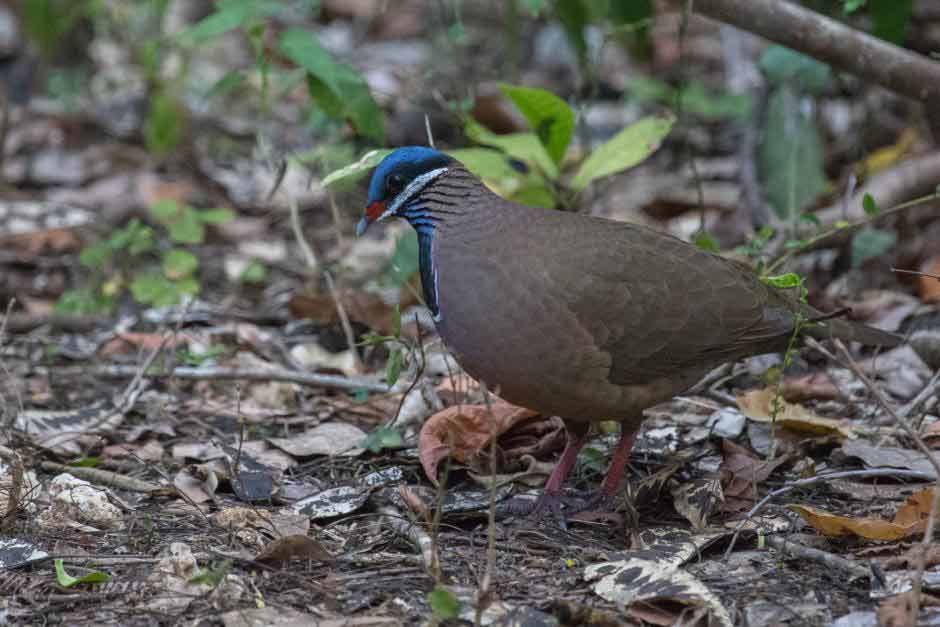 Blue-headed Quail-Dove |
|
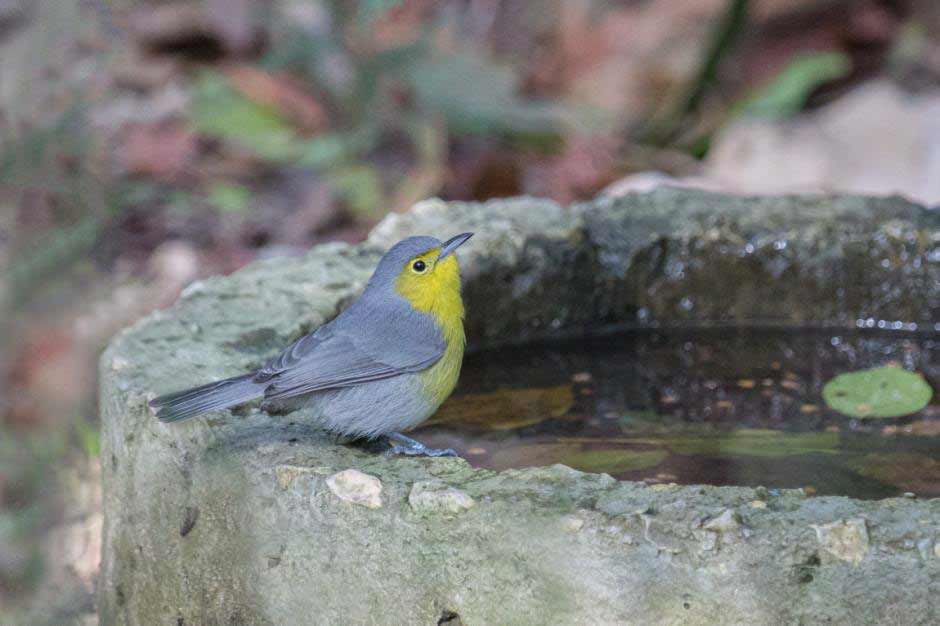 Oriente Warbler |
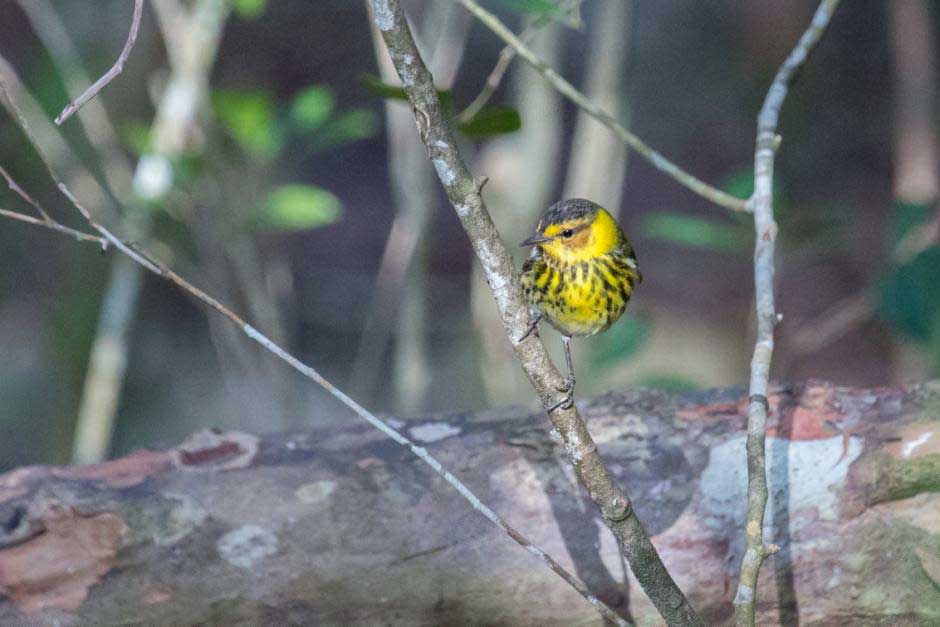 Cape May Warbler |
||
This was another fantastic Cuban birding tour with a wonderful group of participants. We found all the Cuban and regional endemics we were targeting, except for Gundlach’s Hawk, and we also saw a truly excellent number of North American migrants, such as a plethora of colorful wood warblers. The smallest bird in the world, Bee Hummingbird, numerous Cuban Trogon and Cuban Tody sightings, and brilliant views of Blue-headed Quail-Dove, Grey-fronted Quail-Dove and Key West Quail-Dove were some of the many avian highlights.
Day 1, 1 March 2017. Arrival in Havana
All nine of us arrived early before the tour was to officially begin tomorrow. From our comfortable base near Havana airport we already started getting nicely acquainted with some of the single-island and regional endemics. There was a Cuban Emerald nest right outside the back door of the place we stayed (http://www.donaamaliacuba.com/en/place) and Red-legged Thrush was very much in evidence (as it always is throughout Cuba, even in the middle of cities). Antillean Palm Swift winged its way overhead, and Cuban Pewee showed very well and gave its characteristic call. Cuban Blackbird and Greater Antillean Grackle put in their first appearances. More widespread species such as Smooth-billed Ani, Yellow-breasted Sapsucker, Grey Catbird, and various North American wood warblers entertained us.
Day 2, 2 March 2017. Westwards to La Güira National Park
After a superb breakfast with our very attentive and helpful hosts at the B&B we headed westwards, bound for the wooded hills of La Güira National Park. We arrived at our hotel, had a leisurely lunch (with Antillean Palm Swift swooping over our heads) and a bit of a rest during the hottest hours of the day before heading to our Cuban Grassquit site. We had fantastic views of our target species, along with the ever-abundant Yellow-faced Grassquit and several other good birds. Everyone was excited to see our first (of many) prehistoric-looking Great Lizard Cuckoo. Heading into the park proper we made some stops for almost any birds we saw while driving (noting that, right at the start of the trip, most birds are new and exciting!). Cuban Bullfinch and the stunningly-colored Western Spindalis were two such highlights.
We eventually arrived at the cave complex called Cueva de los Portales, where Che Guevara hid during the Cuban missile crisis. This is the best place to find the rather dull-looking Cuban Solitaire, whose beautiful, ventriloquial call certainly compensates for its disappointing appearance. This time the solitaire worked us hard, but we were eventually rewarded with good views after trying to follow the call of a couple of individuals.
Around these caves, we also located and scoped a fabulous little Cuban Pygmy Owl as well as a magnificent Cuban Trogon in front of a cliff face right near Che Guevara’s cave. And we were all ecstatic to get our first views of the tiny, unbelievably-colored Cuban Tody (a bird we were to see a lot more of throughout the trip). West Indian Woodpecker and the unusual, beautiful Cuban Green Woodpecker put in noisy appearances. A magnificent, orange-blossomed tree full of the regional endemic Tawny-shouldered Blackbird and Cuban Blackbird kept everyone well entertained. We were also glad to find two regional endemic warblers, Olive-capped Warbler (which is highly localized because of its strict habitat – pine trees – requirement) and Yellow-headed Warbler. As always, migrant North American warblers, such as Louisiana Waterthrush to name but one of them, were much in evidence. Vireos were also out in force, and we saw Cuban Vireo, White-eyed Vireo, and Yellow-throated Vireo today.
We also spent a little time looking at Brazilian free-tailed bat and Jamaican fruit-eating bat in the caves near Che’s living quarters.
We also managed to fit in a quick late afternoon session at Hacienda Cortina, where we saw Scaly-naped Pigeon (sadly not seen well by everyone), the Endangered (IUCN) Cuban endemic Giant Kingbird, and the more common and widespread Loggerhead Kingbird, then also La Sagra’s Flycatcher and other nice birds.
Day 3, 3 March 2017. La Güira and long transfer to the Zapata Peninsula
An early morning visit to Hacienda Cortina again generated brilliant views of the Vulnerable (IUCN) Cuban endemic Fernandina’s Flicker – a pair at the nest – along with a lot of other birds, such as our first Cuban Oriole, before embarking on our long drive to Playa Larga on the Bay of Pigs at the Zapata Peninsula. We punctuated our long drive by stopping at some water bodies, adding several widespread waterbirds to our list, such as Ruddy Duck, Lesser Scaup, Snail Kite, Neotropic and Double-crested Cormorants, and various others. After spending a large part of the day traveling, in the late afternoon we were rewarded with a flock of beautiful Cuban Amazons right at our hotel, as well as Cuban Crow with its delightful repertoire of weird calls, also within the hotel gardens.
Day 4, 4 March 2017. Our first full day in the famed Zapata Swamp area
We made an early start, early enough to be rewarded with spotlight views of Cuban Nightjar along the road. The idea was that we wanted to get to an area of the Zapata Swamp (Santo Tomás) around dawn to try and find the tricky, Endangered (IUCN) Zapata Wren (which is in its own genus and hence is unique/has no very close relatives). A boat trip rewarded us with excellent views of the wren, followed by saturation views of the colorful, nicely-marked Zapata Sparrow (we also found a different, more “washed-out” subspecies of this sparrow later in the trip, at Cayo Coco). A pair of Sandhill Cranes flew over the swamp, and Limpkin stumbled away from us into the forest as we approached it. We saw White-crowned Pigeon in good numbers here and in other parts of the island. Our first Northern Crested Caracara also put in an appearance.
After a great morning we ate a much-deserved lunch and then rested for a while (birding tours to Cuba are not all that difficult!) before heading off on an extremely exciting afternoon birding session at Soplillar. During this birding session we managed to locate several more absolutely superb species, such as a day-roosting, giant Stygian Owl and the much smaller Bare-legged Owl (frustratingly, we never managed to see this bird’s legs – I’ve never seen them once, in fact, even though this is not the first Cuban birding tour I have guided – I always just see the top half of the bird poking out of a nest/roost hole!). Compensation, though, came in the form of Cuban Parakeet, Cuban Martin, and eleven wood warbler species for the day. As if this were not enough, we stopped at the home of someone who feeds hummingbirds, and here we observed our first Bee Hummingbird, Planet Earth’s smallest bird! There were many other birds using the feeders here, including Cuba’s other regionally-endemic hummingbird, Cuban Emerald, and also Cuban Oriole and lots of nice warblers. And we admired several hutias (bizarre-looking giant rodents), unfortunately in cages, but nevertheless interesting to see.
Day 5, 5 March 2017. Quail-Doves and mangrove birds
A Cuban birding trip is not complete without quail-doves. So we started the day at Bermejas (after driving along the beautiful shoreline and beaches beyond Playa Girón), where we were rewarded with excellent views of the Endangered (IUCN) Cuban endemic Blue-headed Quail-Dove and the Vulnerable (IUCN), recently split and therefore now endemic to Cuba Grey-fronted Quail-Dove. Both of these are remarkably beautiful birds. Kieran, Pattie, and I also almost stood on some extremely tame Blue-headed Quail-Doves the following day as well, at Cueva de los Peces after some nearby snorkeling.
We then continued to our nearby site (La Cuchilla) for Red-shouldered Blackbird (a regional endemic resembling Red-winged Blackbird in looks and voice) and Eastern Meadowlark, but it was so crazily windy that we only managed to get poor views of each of these species. We did, however, return the next morning, when the weather was better, and we were rewarded with brilliant views of both.
After our routine lunch and “heat-of-the-day” rest we visited the mangroves of Las Salinas. Here we saw many new trip birds (as it was a completely new habitat), including Cuban Black Hawk, Western Osprey, Northern Harrier, American Flamingo, Wood Stork, Roseate Spoonbill, eight heron species, American White Pelican, Brown Pelican, Clapper Rail, many shorebird species, Gull-billed Tern, Caspian Tern, and Blue-grey Gnatcatcher.
Day 6, 6 March 2017. Bermejas again and other sites around Zapata
After properly seeing Red-shouldered Blackbird and Eastern Meadowlark (and stumbling across a Fernandina’s Flicker on the ground) back a La Cuchilla, we returned to Bermejas to a brilliant site deep within the forest, where all kinds of warblers as well as quail-doves come to drink at a small waterhole (at least during the dry season, when our tours are timed). We managed to add two new Quail-Doves, the widespread Ruddy and the regional-endemic Key West to our list, thus completing a clean sweep of all the quail-doves possible in Cuba. We wanted to see Bee Hummingbird away from feeders, so we also went to another stakeout for this bird right near Bermejas. Cuban Bullfinch and a messy-looking (molting into summer plumage) Indigo Bunting are also worth mentioning.
Our pace was becoming increasingly relaxed, because a feature of this tour was that we were always seemingly ahead of ourselves, except when it came to Gundlach’s Hawk, which we were already now starting to get worried about, as it had not yet appeared.
Day 7, 7 March 2017. Zapata to Camagüey
This was a very long travel day, but we did briefly stop at a crocodile farm to admire Cape May Warbler, Black-throated Blue Warbler, and several other nice birds. And we arrived in time to do an informative bicitaxi tour of the old city (established in 1528).
Day 8, 8 March 2017. Birding Sierra de Najasa/La Belén
We made another early start for this working ranch (La Belén), where we rather quickly found our main targets, except for one of them (please see below). Cuban Palm Crow (along with the comic Cuban Crow with its funny calls) and the rather uninspiring (although it’s a Near-threatened [IUCN] regional endemic) Plain Pigeon were the targets we found easily. Woodpeckers abound here, and we once again stumbled across Fernandina’s Flicker along with the much more common Cuban Green Woodpecker and West Indian Woodpecker. We were glad to catch up with some old “friends” (I’m not sure if they liked us back, though) we had not seen for a few days, such as Giant Kingbird and others. Getting increasingly worried about Gundlach’s Hawk, we did a six-hour wait for it, but to no avail. That was probably not such a good move, although we would have thought differently if the species had actually flown by. Perhaps it’s just a variant of Cooper’s Hawk after all! (I’m just trying to make us feel better about missing it).
Day 9, 9 March 2017. Transfer from Camagüey to Cayo Coco
This was an interesting travel day, culminating in a scenic drive across the long causeway to the Jardines del Rey chain of islands, Cayo Coco (where we were to spend two nights) being one of the islands. Just before the causeway we stopped at our stakeout for Mangrove Cuckoo, obtaining excellent views of it, and also belatedly adding Northern Flicker to our growing list, along with Anhinga. The causeway itself was, as always, very productive, allowing sightings of vast stands of pink American Flamingos, a few Roseate Spoonbills, Red-breasted Merganser, Magnificent Frigatebird, Royal Tern, Cabot’s Tern, Caspian Tern, Laughing Gull, and others.
After lunch at our hotel we went to our site for Cuban Gnatcatcher and got spectacular views of this beautifully-marked little thing. We stopped at a beach where we found Piping Plover, Sanderling, and Ruddy Turnstone.
We then went to La Cueva del Jabali, which is a nightclub set in a cave! The staff now feed and provide water for the birds at two spots near the nightclub, and it is thus one of the easiest places for getting good views of Key West Quail-Dove and a myriad warblers that come to drink – these included the endemic Oriente Warbler as well as a host of North American migrants (including Hooded Warbler, which we saw the next afternoon at this site, not today).
Day 10, 10 March 2017. A whole day at Cayo Coco and nearby cays
We had only one target species left for Cuba! Apart, of course, from Gundlach’s Hawk, which was becoming our bogey bird, although that’s not surprising as its missed on a great many Cuban birding trips, especially in years like this in which no known active nest sites are around. The last “realistic” target was Bahama Mockingbird, which we got to within a couple of yards at Cayo Paredón near the lighthouse (after being distracted by three or four of the very common Northern Mockingbird) and later on Cayo Coco. We also had nice looks at Thick-billed Vireo. The rest of the day was spent doing relaxed birding, looking at species we had already seen previously as well as a couple of new ones, which were, however, not endemics/targets (e.g., American Oystercatcher and Hooded Warbler).
Day 11, 11 March 2017. Transfer to Havana
This was a long travel day. We tried a site en route (also our lunch stop) where Gundlach’s Hawk had nested last year, but to no avail. However, we did find Red-legged Honeycreeper and a couple of other nice birds here.
Day 12, 12 March 2017. Havana city tour
The group did a bus/walking tour of various landmarks around Havana, including the Old City.
Common Name (IOC 7.1) Scientific Name (IOC 7.1) Trip
Bold = Cuban endemic or regional endemic if stated as (regional)
I = Introduced. NT = Near-threatened, V = Vulnerable, E = Endangered, CR = Critically Endangered
ANSERIFORMES
Ducks, Geese and Swans Anatidae
West Indian Whistling Duck (V) Dendrocygna arborea 1
Lesser Scaup Aythya affinis 1
Red-breasted Merganser Mergus serrator 1
Ruddy Duck Oxyura jamaicensis 1
GALLIFORMES
Guineafowl Numididae
Helmeted Guineafowl (I) Numida meleagris 1
PODICIPEDIFORMES
Grebes Podicipedidae
Pied-billed Grebe Podilymbus podiceps 1
PHOENICOPTERIFORMES
Flamingos Phoenicopteridae
American Flamingo Phoenicopterus ruber 1
CICONIIFORMES
Storks Ciconiidae
Wood Stork Mycteria americana 1
PELECANIFORMES
Ibises, Spoonbills Threskiornithidae
American White Ibis Eudocimus albus 1
Roseate Spoonbill Platalea ajaja 1
Herons, Bitterns Ardeidae
Black-crowned Night Heron Nycticorax nycticorax 1
Yellow-crowned Night Heron Nyctanassa violacea 1
Green Heron Butorides virescens 1
Western Cattle Egret Bubulcus ibis 1
Great Blue Heron Ardea herodias 1
Great Egret Ardea alba 1
Reddish Egret (NT) Egretta rufescens 1
Tricolored Heron Egretta tricolor 1
Little Blue Heron Egretta caerulea 1
Snowy Egret Egretta thula 1
Pelicans Pelecanidae
Brown Pelican Pelecanus occidentalis 1
American White Pelican Pelecanus erythrorynchos 1
SULIFORMES
Frigatebirds Fregatidae
Magnificent Frigatebird Fregata magnificens 1
Cormorants, Shags Phalacrocoracidae
Neotropic Cormorant Phalacrocorax brasilianus 1
Double-crested Cormorant Phalacrocorax auritus 1
Anhingas, Darters Anhingidae
Anhinga Anhinga anhinga 1
ACCIPITRIFORMES
New World Vultures Cathartidae
Turkey Vulture Cathartes aura 1
Ospreys Pandionidae
Western Osprey Pandion haliaetus 1
Kites, Hawks and Eagles Accipitridae
Northern Harrier Circus hudsonius 1
Snail Kite Rostrhamus sociabilis 1
Cuban Black Hawk (NT) Buteogallus gundlachii 1
Red-tailed Hawk Buteo jamaicensis 1
GRUIFORMES
Rails, Crakes and Coots Rallidae
Clapper Rail Rallus crepitans 1
Purple Gallinule Porphyrio martinica 1
Common Gallinule Gallinula galeata 1
American Coot Fulica americana 1
Cranes Gruidae
Sandhill Crane Grus canadensis 1
Limpkin Aramidae
Limpkin Aramus guarauna 1
CHARADRIIFORMES
Stilts, Avocets Recurvirostridae
Black-necked Stilt Himantopus mexicanus 1
Plovers Charadriidae
Grey Plover Pluvialis squatarola 1
Piping Plover Charadrius melodus 1
Killdeer Charadrius vociferus 1
Jacanas Jacanidae
Northern Jacana Jacana spinosa 1
Sandpipers, Snipes Scolopacidae
Greater Yellowlegs Tringa melanoleuca 1
Lesser Yellowlegs Tringa flavipes 1
Willet Tringa semipalmata 1
Spotted Sandpiper Actitis macularius 1
Ruddy Turnstone Arenaria interpres 1
Sanderling Calidris alba 1
Gulls, Terns and Skimmers Laridae
Laughing Gull Leucophaeus atricilla 1
Bonaparte's Gull Chroicocephalus philadelphia 1
Gull-billed Tern Gelochelidon nilotica 1
Caspian Tern Hydroprogne caspia 1
Royal Tern Thalasseus maximus 1
Cabot's Tern Thalasseus acuflavidus 1
COLUMBIFORMES
Pigeons, Doves Columbidae
Rock Dove (I) Columba livia 1
White-crowned Pigeon (NT) Patagioenas leucocephala 1
Scaly-naped Pigeon Patagioenas squamosa 1
Plain Pigeon (NT)(regional) Patagioenas inornata 1
Eurasian Collared Dove (I) Streptopelia decaocto 1
Common Ground Dove Columbina passerina 1
Blue-headed Quail-Dove (E) Starnoenas cyanocephala 1
Ruddy Quail-Dove Geotrygon montana 1
Grey-fronted Quail-Dove (V) Geotrygon caniceps 1
Key West Quail-Dove (regional) Geotrygon chrysia 1
Mourning Dove Zenaida macroura 1
Zenaida Dove Zenaida aurita 1
White-winged Dove Zenaida asiatica 1
CUCULIFORMES
Cuckoos Cuculidae
Smooth-billed Ani Crotophaga ani 1
Mangrove Cuckoo Coccyzus minor 1
Great Lizard Cuckoo (regional) Coccyzus merlini 1
STRIGIFORMES
Owls Strigidae
Bare-legged Owl Margarobyas lawrencii 1
Cuban Pygmy Owl Glaucidium siju 1
Stygian Owl Asio stygius 1
CAPRIMULGIFORMES
Nightjars Caprimulgidae
Cuban Nightjar Antrostomus cubanensis 1
APODIFORMES
Swifts Apodidae
Antillean Palm Swift (regional) Tachornis phoenicobia 1
Hummingbirds Trochilidae
Cuban Emerald (regional) Chlorostilbon ricordii 1
Bee Hummingbird (NT) Mellisuga helenae 1
TROGONIFORMES
Trogons Trogonidae
Cuban Trogon Priotelus temnurus 1
CORACIIFORMES
Kingfishers Alcedinidae
Belted Kingfisher Megaceryle alcyon 1
Todies Todidae
Cuban Tody Todus multicolor 1
PICIFORMES
Woodpeckers Picidae
Yellow-breasted Sapsucker Sphyrapicus varius 1
West Indian Woodpecker (regional) Melanerpes superciliaris 1
Cuban Green Woodpecker Xiphidiopicus percussus 1
Northern Flicker Colaptes auratus 1
Fernandina's Flicker (V) Colaptes fernandinae 1
FALCONIFORMES
Caracaras, Falcons Falconidae
Northern Crested Caracara Caracara cheriway 1
American Kestrel Falco sparverius 1
Merlin Falco columbarius 1
Peregrine Falcon Falco peregrinus 1
PSITTACIFORMES
African & New World Parrots Psittacidae
Cuban Amazon (NT) (regional) Amazona leucocephala 1
Cuban Parakeet (V) Psittacara euops 1
PASSERIFORMES
Tyrant Flycatchers Tyrannidae
Eastern Wood Pewee Contopus virens 1
Cuban Pewee (regional) Contopus caribaeus 1
Giant Kingbird (E) Tyrannus cubensis 1
Loggerhead Kingbird Tyrannus caudifasciatus 1
La Sagra's Flycatcher (regional) Myiarchus sagrae 1
Vireos, Greenlets Vireonidae
White-eyed Vireo Vireo griseus 1
Thick-billed Vireo (regional) Vireo crassirostris 1
Cuban Vireo Vireo gundlachii 1
Yellow-throated Vireo Vireo flavifrons 1
Red-eyed Vireo Vireo olivaceus 1
Crows, Jays Corvidae
Cuban Palm Crow Corvus minutus 1
Cuban Crow (regional) Corvus nasicus 1
Swallows, Martins Hirundinidae
Tree Swallow Tachycineta bicolor 1
Purple Martin Progne subis 1
Cuban Martin Progne cryptoleuca 1
Northern Rough-winged Swallow Stelgidopteryx serripennis 1
Cave Swallow Petrochelidon fulva 1
Wrens Troglodytidae
Zapata Wren (E) Ferminia cerverai 1
Gnatcatchers Polioptilidae
Blue-grey Gnatcatcher Polioptila caerulea 1
Cuban Gnatcatcher Polioptila lembeyei 1
Mockingbirds, Thrashers Mimidae
Grey Catbird Dumetella carolinensis 1
Northern Mockingbird Mimus polyglottos 1
Bahama Mockingbird (regional) Mimus gundlachii 1
Thrushes Turdidae
Cuban Solitaire (NT) Myadestes elisabeth 1
Red-legged Thrush (regional) Turdus plumbeus 1
Old World Sparrows, Snowfinches Passeridae
House Sparrow (I) Passer domesticus 1
New World Warblers Parulidae
Ovenbird Seiurus aurocapilla 1
Worm-eating Warbler Helmitheros vermivorum 1
Louisiana Waterthrush Parkesia motacilla 1
Northern Waterthrush Parkesia noveboracensis 1
Black-and-white Warbler Mniotilta varia 1
Common Yellowthroat Geothlypis trichas 1
American Redstart Setophaga ruticilla 1
Cape May Warbler Setophaga tigrina 1
Northern Parula Setophaga americana 1
American Yellow Warbler Setophaga aestiva 1
Black-throated Blue Warbler Setophaga caerulescens 1
Palm Warbler Setophaga palmarum 1
Olive-capped Warbler (regional) Setophaga pityophila 1
Myrtle Warbler Setophaga coronata 1
Yellow-throated Warbler Setophaga dominica 1
Prairie Warbler Setophaga discolor 1
Black-throated Green Warbler Setophaga virens 1
Hooded Warbler Cetophaga citrina 1
Family Uncertain Incertae Sedis 2
Yellow-headed Warbler Teretistris fernandinae 1
Oriente Warbler Teretistris fornsi 1
Oropendolas, Orioles and Blackbirds Icteridae
Eastern Meadowlark Sturnella magna 1
Cuban Oriole Icterus melanopsis 1
Tawny-shouldered Blackbird (regional) Agelaius humeralis 1
Red-shouldered Blackbird Agelaius assimilis 1
Shiny Cowbird Molothrus bonariensis 1
Cuban Blackbird Ptiloxena atroviolacea 1
Greater Antillean Grackle (regional) Quiscalus niger 1
Buntings, New World Sparrows and allies Emberizidae
Zapata Sparrow (E) Torreornis inexpectata 1
Tanagers and allies Thraupidae
Red-legged Honeycreeper Cyanerpes cyaneus 1
Cuban Bullfinch (regional) Melopyrrha nigra 1
Cuban Grassquit Tiaris canorus 1
Yellow-faced Grassquit Tiaris olivaceus 1
Western Spindalis Spindalis zena 1
Cardinals, Grosbeaks and allies Cardinalidae
Indigo Bunting Passerina cyanea 1
TOTAL 152